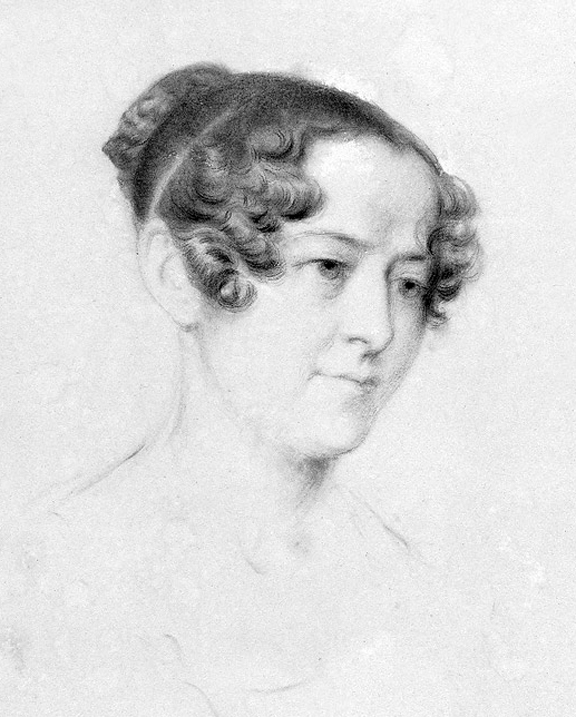More than a year ago, I was complaining in this post called "The Elusive Lady", about the lack of portraits of Lady Jane which were available in the Internet. Only a couple of portraits of her are widely known. Apart of those two, in the book "Lady Franklin´s Ambition" I could recently see a tiny Jane together with her other three sibblings when they were mere children. And there is also, of course, the only known photograph of her discovered by Russell Potter and that drawing which I showed in the formerly mentioned blog post.
Now, recently, after one of my Internet raids in search of Franklin related pictures and portraits, I am delighted to announce that I have found this rare and fascinating marble relief, which is attributed to Thomas Bock, the same artist who painted the Lady Jane´s portrait of 1838, during her stay in Van Diemen´s land.
 |
Lady Jane Franklin
Apparently made by Thomas Bock
|
If you compare both, Thomas´s portrait and the bust, will agree with me that there is no doubt the woman represented is the same. Same hairstyle, nose, gesture of the mouth and slightly bulky eyes. She looks, however, thinner in the plaque and with a less prominent forehead:
 |
| Thomas Bock portrait of Lady Jane 1838 |
Thomas Bock was an English artist a year older than Jane Franklin. Bock was a promising engraver and miniature painter who was deported in 1823 to Autralia for administering drugs to a young woman. He was sentenced to stay fourteen years in Van Diemen´s Land, though after eight years of good behaviour, he became a free citizen. Among other things, his work includes Lady Jane´s commision of painting some aboriginals living in their natural state. Those pieces are of reknown value because are one of the few which show how those people actually were by that time without the influence of the european culture. Another well known painting is that which shows Martinha, the little aborigin girl adopted and subsequently abandoned by the Franklins during their stay. Hers, is a sad story which deserves a completely dedicated blog post.
| Thomas Bock |
That Lady Jane asked Thomas for being painted is an interesting event which forms part of the list of misteries which surround the elusive lady. Specially, if you take into account that she used to despise the company of convicts and exconvicts. Surely, it was the lack of skilled artist in the region and maybe also, Thomas´s impecable background in England before his crime, what called her attention and earned him her pardon.
But whatever were the actual reasons which ended in these two beatiful masterpieces, we should be thankful is thanks to this man that we, not only have a lively second portrait of a more mature Jane Franklin, which allow us to have an accurate idea of her determination by that time, but also a 3D bust which makes Jane Franklin a more real person, someone who looks about to move her head to look at you at your eyes to say some of her famous witty remarks with which she uses to end awkwardly bitter discussions.
Post post: After sharing this un the facebook group "Remembering the Franklin expedition", I have learned there is another bust of Lady Franklin un the Royal Geographical society of London. This other was inspired in an earlier portrait. Unfortunately there are no pictures of It in the Internet but I had the opportunity of seeing a picture and I have to say It was beautifully done.
Post post: After sharing this un the facebook group "Remembering the Franklin expedition", I have learned there is another bust of Lady Franklin un the Royal Geographical society of London. This other was inspired in an earlier portrait. Unfortunately there are no pictures of It in the Internet but I had the opportunity of seeing a picture and I have to say It was beautifully done.

Some further description about this item says:
ResponderEliminar"Lady Jane Franklin, carved marble relief bust, plaque 33 x 25 cm. Provenance: Private collection Queensland. Originally the property of Charles Sherborn the engraver and thence by family decent. Purchased by the Wilsden family in the 1930s where it remained for fifty years, then described in Sotheby's valuation in 1984."
I wonder is a plaster duplicate of that marble bust could easily made, then colorized. Then the colorized bust could be compared to the paibtibg.if it is a maych, then that will be otoof.*Solomon Grundy
ResponderEliminarEste comentario ha sido eliminado por un administrador del blog.
ResponderEliminarThat would be great, Solomon. Somehow the current bust looks lifeless white as it is.
ResponderEliminar